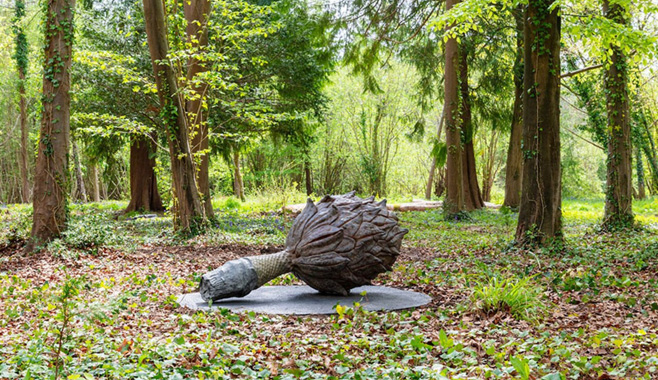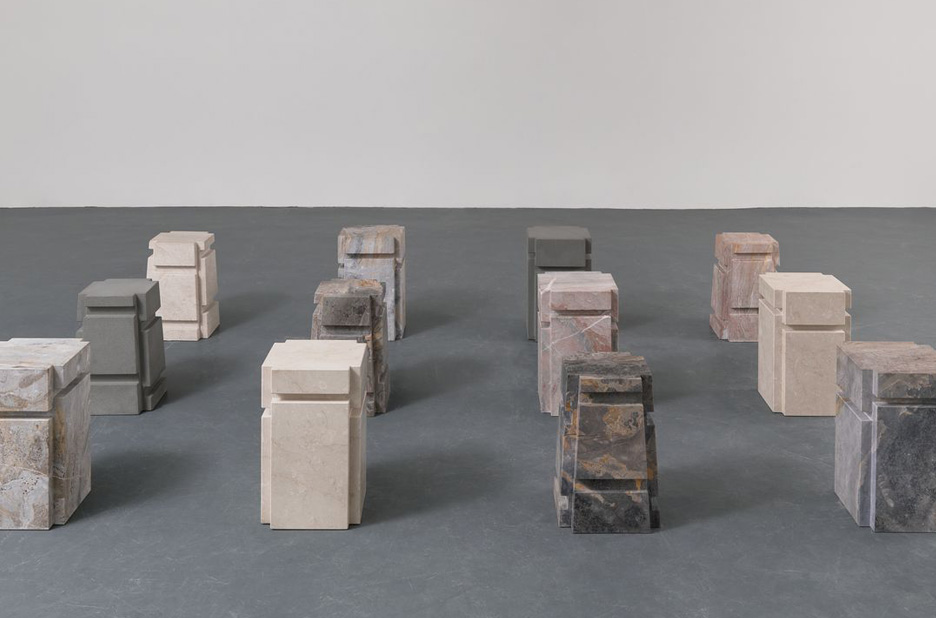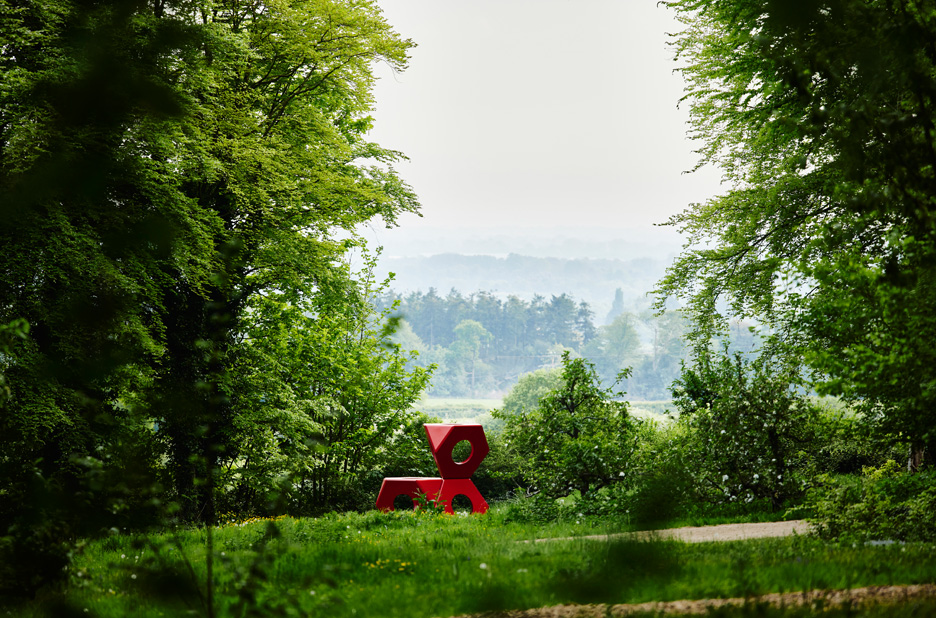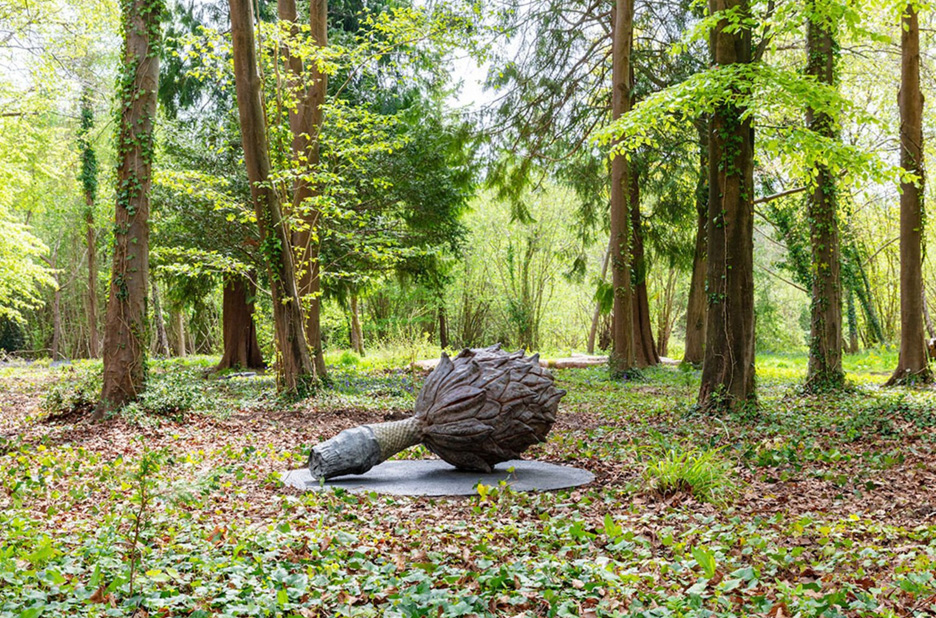Art
Spring/Summer 2025
Goodwood Art Foundation, West Sussex
3/5
Beautiful setting for indifferent art
On the edge of the large Goodwood estate, on the site of the much-missed Cass Sculpture Foundation which closed its doors in 2019, the Goodwood Art Foundation has opened earlier this year. The site has been reorganised and updated to such an extent that it is unrecognisable. Several pristine modern buildings have been constructed for the indoor galleries and a restaurant. Although it is satisfying to see that there is continuity of purpose on these wonderful grounds, unfortunately the art on show is nowhere near as impressive as that of the original Cass Foundation.


The majority of the works on display are by Rachel Whiteread, first female winner of the Turner Prize. In the main gallery, there are her two large installations plus a series of prints of her trivial iphone photos. The photos would be better suited to an Instagram account and cannot really be classed as art. As for the installations, the strongest one is Bergamo III (2023) derived from the public commission for this Italian city. Bergamo is one of the regions which suffered most acutely during Covid and Whiteread took this as a starting point of her commission to create public art which signifies healing. Twelve geometric stone and marble sculptures are arranged in a grid, each the size and shape of a stool, with interesting variations in the stone colour and indentations. Immediately they appear as resting points, solid, commemorative and reassuring. The intricate geometric patterns draw the eye in to find a pleasing pause in comparing them and contemplating their rigid lasting positions.
Elsewhere Whiteread’s creations disappoint. Her obsession with artificial houses which are allegedly embedded in nature feel cold and apathetic in their careless finish, superficial involvement and indifference to their environment. It is as if they were created to be photographed rather than enjoyed as three-dimensional structures. I find it difficult to understand her interest in houses when they are neither refuges nor genuine examples of abandonment and decay, but alien enclosed spaces that are emotionally blank. Her pair of white coffins are perhaps the most significant of the remaining works, but being unable to touch their surface created from mortuary slabs further prevents visitor engagement.
On the subject of touching outdoor sculptures, I really don’t understand why this is disallowed. To be outdoors these sculptures need to be sturdy enough to withstand the weather. Surely that means also sturdy enough to withstand human touch? I always felt being able to touch sculptural work when possible is an important part for its appreciation. I think the foundation is missing a trick here and as a result the already indifferent works appear even more distant.

In another small gallery on site the work of Amie Siegel is on view. It features a video installation Bloodlines and some prints of photos of sky and clouds taken from George Stubb’s paintings. The photo prints are nice but inconsequential. After all they are photos of somebody else’s work and are neither original nor interesting in any way. The video installation shows the interiors and the art in the Goodwood mansion. It is meant to challenge the ideas of who owns the cultural heritage. It fails. It just shows the opulence for the delectation of those less fortunate. During the projection a mother is giving her toddler – and all of us – a cringing running commentary on the nice paintings and furnishings without a single trace of irony or criticism, or indeed self-awareness. The disingenuity of the artist, paid by the Goodwood foundation, to superficially challenge the very wealth that sustains her is staggering. The hypocrisy of the installation, its concept and the foundation itself for featuring it cannot be overstated.
The curators seem to take the Turner Prize as a measure of quality instead of using good judgement. We know that the Turner Prize has been awarded to the great as well as those who can barely be called artists. While innovation needs to be nurtured and rewarded, and as part of that mistakes will inevitably be made, Goodwood could still be innovative without following Turner Prize fads and blunders.
The height of embarrassment is a sound installation by Susan Philipsz, another Turner Prize winner. In the middle of the forest you hear Scottish folky signing from several female voices around you. It would have been much more effective to have a recording of a contemporary groundbreaking piece of music written by a professional rather than this hippy nostalgic twaddle. Some contemporary artists seem to think they can coopt other art forms without developing any knowledge or understanding of them.
It’s good to see a couple of works by an established figure like Isamu Noguchi, but they are quite minor. The only other artwork of quality apart from Whiteread’s Bergamo III is Veronica Ryan’s Untitled (Magnolia Pod) from 2024. It rests on a clearing, giant and yet humble in its earthiness.

It is commendable that Goodwood has invested so much in modernising this space and that it features so many women artists, but the quality of the works is underwhelming. Perhaps over time with new and better acquisitions this will change and this lovely space will get the kind of enchanting and surprising art that used to be the hallmark of the Cass Foundation.